Late Boris Karloff on Blu-ray
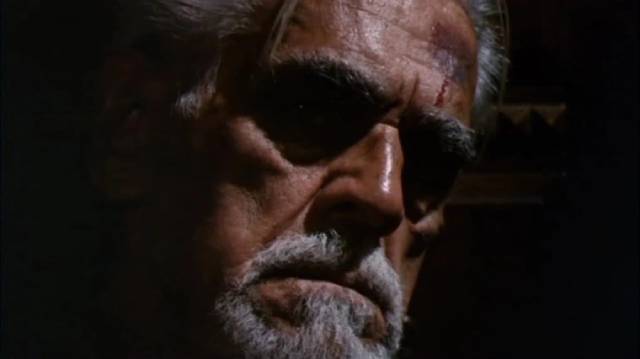
What constitutes movie stardom has changed radically over the century-plus since people began to watch images flickering in the dark. It’s hard to imagine some Golden Age stars building a career today – who would take a chance on a Humphrey Bogart in the age of Marvel? Or a Dustin Hoffman? A Bette Davis or Joan Crawford? Or a Bela Lugosi or Boris Karloff? And even if someone did take a chance, wouldn’t the rough edges of their individuality be polished to a generic sheen so that they might more easily be slotted into the corporate products which dominate mainstream movies these days?
And yet back in the day, it was the distinctive individual qualities of stars which drew an audience, although this was complicated because that individuality was itself honed and tailored by the studios to maximize appeal – the history of Hollywood is rife with stories of the tensions which were endemic to the system, with stars chafing at the narrow boxes in which producers tried to contain them. In fact, these conflicts produced the first fissures which, by the end of the 1950s, saw the whole system begin to crumble as more popular stars broke free and formed their own production companies – though this didn’t always work out to their advantage because audiences weren’t necessarily interested in seeing their favourites in new and different contexts.
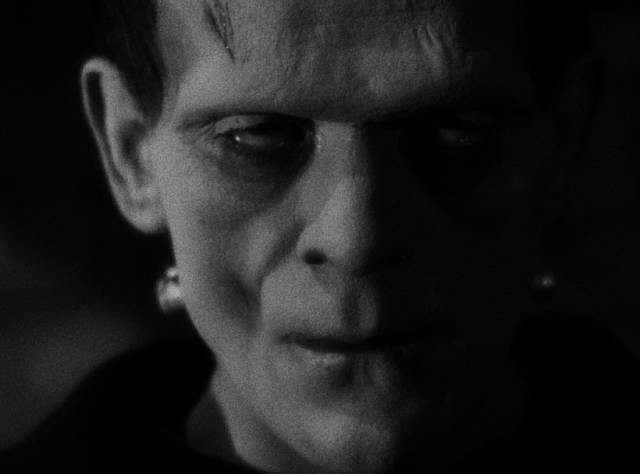
But there were always others who viewed their status as working actors to be sufficient, taking on whatever roles came their way, roles often tailored to their particular persona and used to prop up material which was frequently weak and generic. Yet audiences were still drawn to theatres (and later television screens) by their presence regardless of the context. This was the kind of career Boris Karloff had, and it lasted fifty years, with more than two hundred credits listed on IMDb.
The English-born William Henry Pratt took the stage name Boris Karloff in 1909 and spent a decade touring North America in various stage productions before winding up in Hollywood in 1919. With what we know of his subsequent career, the change of name seems prescient; it went well with his piercing eyes and looming features, but he was in his early forties with five-dozen screen credits behind him before he made his first significant mark as the menacing prisoner Galloway in Howard Hawks’ The Criminal Code (1930), a role he had played on stage. It was this performance which was largely responsible for his casting the following year (after eleven intervening movies) in his iconic role as the Monster in James Whale’s Frankenstein (1931), in which Jack Pierce’s makeup built so effectively on the actor’s features that in future his own face seemed to possess a menacing quality whatever role he took.
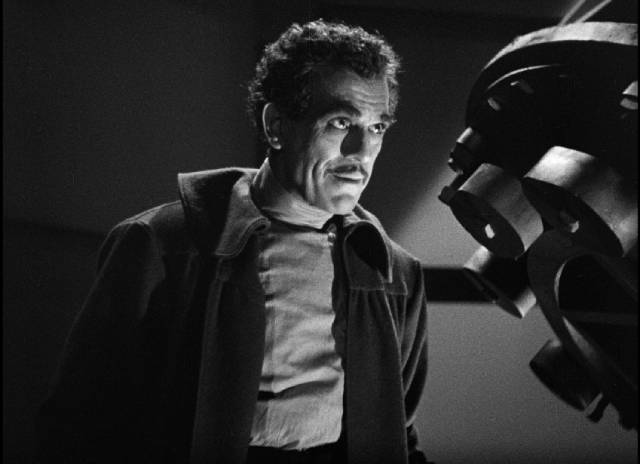
Strangely, this air of menace was often at odds with Karloff’s quiet, avuncular manner and soft lisp, qualities which supported a broader range than the more exotic Bela Lugosi could muster, to some degree fuelling the pair’s lasting rivalry – at least from Lugosi’s perspective, particularly as his career sank into poverty row ignominy, while Karloff became a much-beloved presence in movies and on television to the end of his life, a position around which Peter Bogdanovich constructed his first feature, Targets (1968). By then, Karloff was in poor health, in constant pain, his body so twisted by arthritis that he often performed in a wheelchair. And yet he wouldn’t stop working and spent his last couple of years making extremely cheap Mexican horror movies (all of which were reworked by Jack Hill for the American market), echoing the low-budget years of the early ’40s when the horror market was in decline and Karloff, like Lugosi, toiled on the fringes of the industry in various cheap programme pictures.
But that period didn’t drag Karloff all the way down and he quickly recovered; along with the Columbia mad scientist movies, he appeared in a few late Universal horrors and, more importantly, the final three horror movies produced by Val Lewton at RKO, while also appearing in supporting roles in bigger studio productions – Norman Z. McLeod’s The Secret Life of Walter Mitty, Douglas Sirk’s Lured and (less fortunately, as a native American) Cecil B. DeMille’s Unconquered (all 1947). Although in his sixties by this point, Karloff maintained a daunting schedule in A and B movies and, more frequently, on television with dozens of guest appearances, as well as starring in Colonel March of Scotland Yard (1954-56) and hosting The Veil (1958) and Thriller (1960-62).
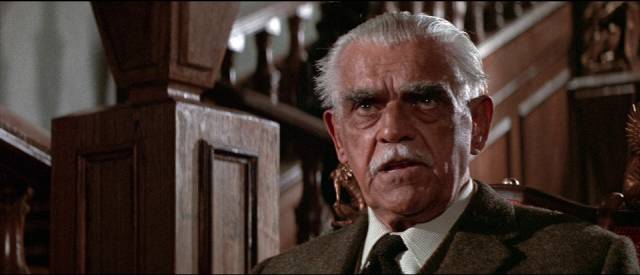
It was after the latter (with sixty-seven episodes over two seasons) that Karloff saw another revival in his popularity; Roger Corman cast him in The Raven and The Terror (both 1963) and he was lured to Italy by Mario Bava for Black Sabbath (also 1963), the latter unfortunately causing him lasting health problems as he was subjected to a powerful wind machine for the ending of his episode “The Wurdalak“. But despite chronic pain and problems with his lungs, after a brief pause (only one small role in 1964, in William Asher’s Bikini Beach, and one in 1965), he remained indefatigable, with numerous credits throughout his final three years.
In addition to narrating Chuck Jones’ perennial seasonal favourite How the Grinch Stole Christmas (1966) and essentially appearing as himself in Targets, two movies from these final years stand out, both newly released in restored editions on Blu-ray.
*

Die, Monster, Die! (Daniel Haller, 1965)
During his long screen career, Karloff only occasionally returned to work in his native England – he made a couple of low-budget horrors in the ’50s for producer Richard Gordon, The Haunted Strangler and Corridors of Blood (both 1958), with occasional guest appearances on television. Then in the mid-’60s, thanks to his connections with Roger Corman and American-International Pictures, he found himself back there to appear in Die, Monster, Die! (1965), the second of the company’s H.P. Lovecraft adaptations, this time – unlike Corman’s The Haunted Palace (1963) – not disguised as a Poe picture and given a contemporary setting. Thanks to favourable exchange rates and tax incentives, American producers were able to stretch budgets by shooting in the U.K., and the Karloff name gave this modest production a commercial boost.
Scripted by television writer Jerry Sohl, Die, Monster, Die! was the first adaptation of Lovecraft’s 1927 story The Colour Out of Space, probably now his most frequently adapted work. In fact, it was only the second movie ever credited as a Lovecraft adaptation (the first being The Haunted Palace), coinciding with the revival of interest in the writer’s work in the ’60s. It was also the first feature directed by Daniel Haller, Corman’s resourceful long-time production designer and art director, and he does a passable, if not particularly stylish, job. The main problem is that none of the characters seem much put out by the terrible things happening at the Witley place.
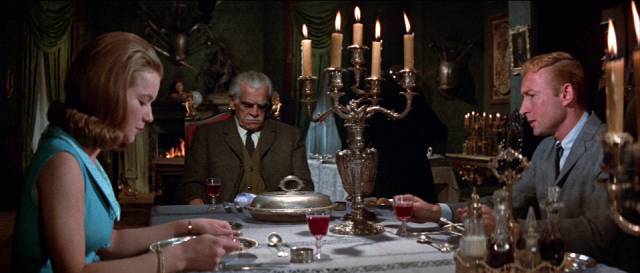
As readers of the story know, those things derive from the malevolent radiation emitted by a meteor which has crashed on the property. It has left a barren, blasted heath around the house, but causes vegetables to grow very large. It has also infected Letitia Witley (Freda Jackson), who is rotting away in her bedroom, and may have driven her husband Nahum (Karloff) mad – he believes the influence of the toxic rock can be harnessed for good and has a greenhouse full of mutated plants and cages holding mutated animals. He also thinks that it can cure his wife, though it’s obvious that it’s killing her.
The movie begins with American Stephen Reinhart (Nick Adams) arriving by train in a small English village and being met with silent hostility when he asks for directions to the Witley place. He finally sets out on foot and finds himself crossing that blasted landscape – obvious but effective matte paintings – before he reaches the old mansion with its threatening “no trespassing” sign. His welcome here is no warmer than it was in the village and old Nahum insists he has to leave immediately. But then Nahum’s daughter Susan (Suzan Farmer) appears and greets Stephen warmly; they met while she was away at school and began a relationship, which her father is obviously not too pleased about.
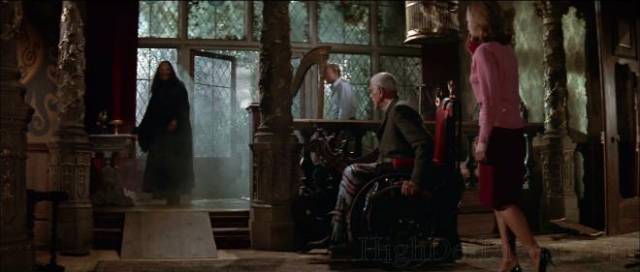
Stephen and Susan try to figure out what has gone wrong on the farm, discovering those caged monsters, and her mother, keeping herself concealed in a dark bedroom, pleads with Stephen to take Susan away immediately. The source of contagion and madness is a glowing green rock in a well in the basement – overlooked confusingly by what appear to be Satanic symbols, suggesting that there’s a family tradition of dabbling in the forbidden arts (and hinting at Lovecraft’s larger mythos). Eventually Nahum becomes a glowing monster rampaging around the house (a stuntman in an unconvincing mask since Karloff was physically unable to manage the action), and Susan and Stephen barely escape the time-honoured American-International climactic conflagration which brings things to a fiery end.
As in many of his mad scientist movies, Karloff’s madness here is tempered by good intentions mistakenly applied to misunderstood forces. His Nahum is first cousin to Dr. Janos Rukh in Lambert Hillyer’s The Invisible Ray (1935), another scientist with noble intentions who becomes contaminated by the forces he tries to harness (coincidentally another radioactive meteor) for the general good and ends up embodying destructive chaos. Nahum’s confinement to a wheelchair for much of the movie is narratively justified by the effects of the radiation, though he does get to his feet when necessary.
The new BFI HD transfer looks excellent, with rich colours and more detail than my old MGM DVD (I didn’t previously upgrade to Shout! Factory’s 2014 Blu-ray, which is reportedly inferior to this new restoration). The disk is stacked with special features, including a commentary and almost an hour-and-a-half of featurettes about Karloff and Nick Adams, plus a BFI-produced experimental short from 1964.
*
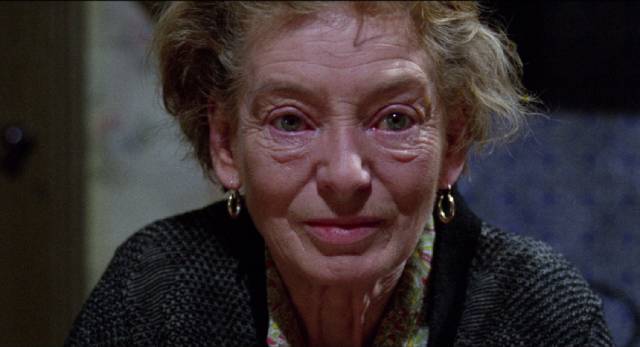
The Sorcerers (Michael Reeves, 1967)
Although audience tastes were changing by the mid-’60s, Die, Monster, Die!, once it settles into the Witley mansion, is essentially an old-fashioned Gothic, closely related to the Corman Poe movies Daniel Haller had previously designed. Michael Reeves’ The Sorcerers (1967), made just two years later, is something quite different. Although in some ways it, too, hearkens back to Karloff’s old mad scientist movies of the ’30s and ’40s, it is firmly rooted in its contemporary setting, with a very sour view of London towards the end of the Swinging Sixties. Although quite rough around the edges, Reeves’ second feature mixes decadent hedonism with a bitterly satirical view of generational conflict, with the young sliding into nihilism and the old resentful of a freedom they themselves never had an opportunity to experience.
Karloff plays Professor Marcus Monserrat, an elderly academic who has devised a (rather vaguely defined) machine which uses a hypnotic process to create a bond between two people’s minds so that one can share the experiences of the other. He goes out one evening to find a test subject and settles on Mike Roscoe (Ian Ogilvy), a young man already so jaded that nothing can amuse him any more – bored with friends, bored with his girlfriend Nicole (Elizabeth Ercy), bored with life itself. Suspicious of the old man offering him money, he nonetheless follows Monserrat back home and submits to the experimental process – which involves a makeshift headset and cheap light show. It works better than Monserrat had ever hoped, with both himself and his wife Estelle (Catherine Lacey) gaining access to Mike’s mind and senses.
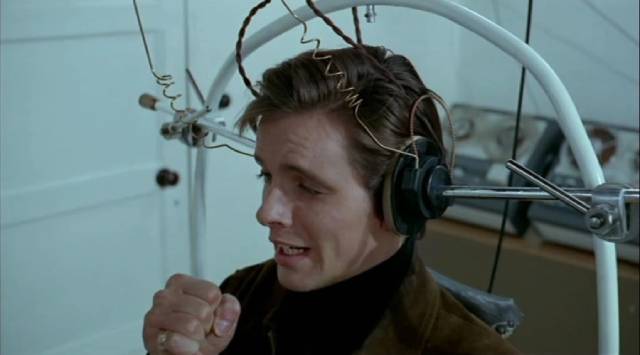
In fact, rather than simply a passive connection, it turns out that the process allows the old couple to control Mike’s behaviour – he becomes a vehicle they can drive, experiencing youth and health again. While Monserrat’s interest remains academic – he sees his device as a way to allow the old and infirm to experience a more active life again as they face terminal physical decline – Estelle quickly becomes addicted to what seems to be consequence-free experience, nudging Monserrat to participate in increasingly risky vicarious behaviour. First it’s a bit of breaking-and-entering to steal a fur coat for Estelle; then it’s a bit of sex, although getting Mike to visit a girl he knows (a very young Susan George) quickly escalates into something much darker as Estelle’s rage causes him to kill her.
Monserrat’s own sense of decency is far too weak to rein in Estelle’s new urges towards violence – in the words of Alex in A Clockwork Orange, this is “old age having a go at youth”, venting a pent-up fury towards those who seem to have so much more freedom and yet fail to do anything with that freedom. With each experience, none of which Mike can remember after the fact, Estelle becomes more monstrous, leading to a mutually destructive climax involving a police chase through the city, a fiery crash, and the inevitable consequences of a bond which has bound the old couple to their puppet far more closely than they realized.
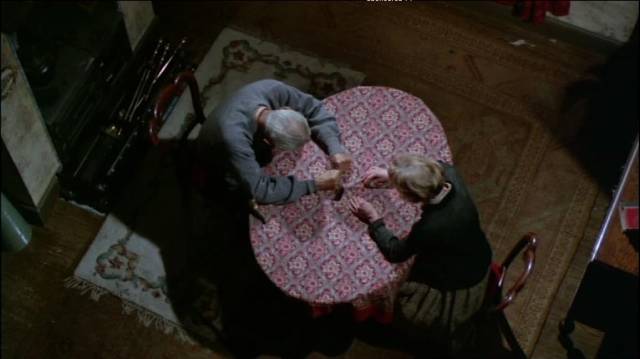
In the original script by John Burke, Monserrat himself was the villain, but Karloff only agreed to take the role if he could be made a sympathetic character. It was a canny choice, because not only did the changes add depth to the old scientist, a well-intentioned man who had failed to see the potential danger in his work; it opened up the possibility for something far more interesting than a formulaic exercise in a familiar genre. While Karloff is very good as Monserrat, the film belongs to Lacey, who gives a ferocious performance as an embittered woman who seizes the opportunity to throw off middle-class propriety and give unfettered expression to a lifetime of pent-up emotion. Karloff reacts to this with surprise and confusion, seeing something in his life’s companion of which he had previously been unaware and is now helpless to deal with; together, he and Lacey give the film an emotional depth which raises it far above its otherwise fairly basic genre trappings.
The final irony of The Sorcerers is that the things Estelle makes their puppet do are actually well within Mike’s capabilities – embedded within his boredom with life is a lack of empathy which borders on sociopathy and it’s easy to believe that, even without Estelle’s prompting, he would’ve drifted into increasingly antisocial behaviour, seeking kicks to make himself feel something … he might very well have become the prototype of Alex and his Droogs. In fact, the film’s sense of London’s decadence and decay suggests the roots of the bleak future depicted in Anthony Burgess’s A Clockwork Orange (written in 1962, filmed by Stanley Kubrick in 1971).
The new 88 Films Blu-ray has an excellent image, with vibrant colours and a lot of detail with a film-like texture. There are two commentaries along with forty-five minutes of interviews: Ian Ogilvy, assistant cameraman Don Lord and editor David Woodward.
*
Despite his unconventional looks and a body which was increasingly distorted by painful arthritis, Boris Karloff remained a beloved star for four decades after making an indelible mark in Frankenstein. He was almost eighty when he made these two low-budget horror movies in England and in both he displays his familiar charm and a full commitment to the characters he’s playing, a dedicated professional to the end. Throughout his career, regardless of budget or material, he never looked down on the roles he was offered and that attitude always raised the quality of the films he appeared in.
Comments
A great summation of a truly professional, and very sympathetic, performer. I can only imagine the discussions he and Bogdanovich had before and during the making of ‘Targets’!